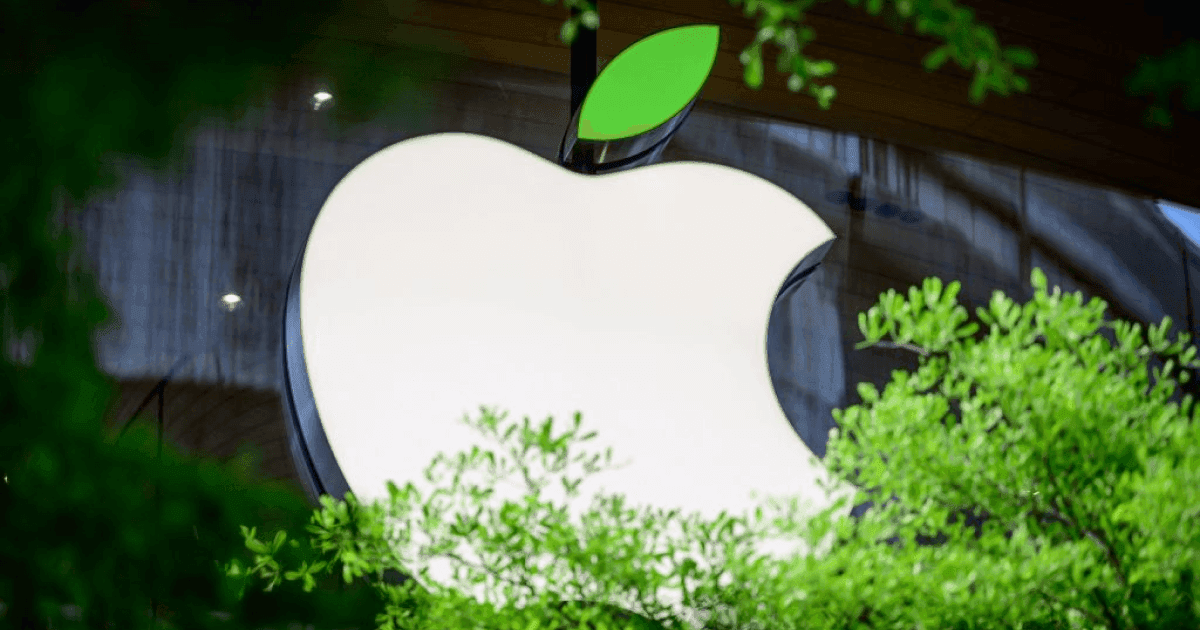
There is no doubt that Apple has become a leader in showing that they are working to reduce its environmental footprint. They have actively tried to do this through initiatives focusing on greenhouse gas emissions reduction, water conservation and the adoption of renewable energy. However, it’s no secret that past scrutiny has questioned the sincerity of Apple's efforts, with time and time again people having concerns about greenwashing which isn’t alien to big companies.
Aside from this, it’s evident that Apple continues to align their commitments through product designs containing recycled materials and transparent environmental reporting that most of the tech world fail to do.
In this blog, we look at Apple’s sustainability progress for the year 2023, their achievements but also where they fell short. Has Apple created impactful sustainability changes or is this just another case of ‘going green’? Let’s take a look at what progress Apple has made so far.
Highlighted in their recent press release, Apple has been moving to reduce their greenhouse gas emissions and according to their data, they’ve gained some positive results. There has been a notable decrease with a drop from 20.6 million metric tons in 2022 to 16.1 million metric tons in 2023 - that's a 22% reduction in just one year! Apple states that it’s down to the inclusion of recycled materials in their products. We hope this is true, and not the results of buying carbon credits which can be the case, especially for a company who has time and time again been accused of greenwashing.
With Apple suppliers being proactive in hitting this goal, they’ve adopted cleaner sources of electricity and ultimately played a big role in the reduction of greenhouse emissions associated with Apple’s supply chain. Now, in comparison to Samsung’s sustainability report, Apple is miles ahead… With no mention of greenhouse gas emissions from Samsung, let alone a reduction, it makes us wonder why Samsung is shouting about their aim to become net zero in the years to come and doing zero towards it. In our opinion, this is a disappointment, which is why regardless of the negative press Apple gets, we can’t deny they are doing more than some of their larger competitors.
So, where does Apple stand on clean energy and environmental initiatives? It’s fair to say that they have always included initiatives when it comes to the environment and how they plan to incorporate clean energy across their supply chain. This year it seems as though they have focused heavily on these initiatives with a handful of organisations, but what impact has it had?
The Supplier Clean Energy Program has been a central part in Apple’s strategy during 2023 and if you’re not familiar with what it is, it has been designed to reduce carbon emissions and electricity usage. Not to mention, with over 16.5 gigawatts of clean energy being produced, both Apple and its suppliers have collectively managed to save an impressive 2 billion kilowatt-hours of electricity in the past year alone.
To put that into perspective, 1 gigawatt of energy can be used to power 100 million LED bulbs and the average American home uses 10,932 kilowatt hours (kWh) of electricity per year, so imagine how many homes 2 billion kilowatt-hours could power… It’s safe to say that this has been instrumental in minimising the carbon footprint associated with Apple’s manufacturing processes. Their commitment doesn’t stop there - they have also invested in solar projects which are aimed at offsetting the power used to charge Apple devices.
In the U.S, Apple is investing in a portfolio of solar projects across Michigan, with construction underway to bring 132 megawatts of clean energy online later this year.
In Spain Apple has partnered with an International Solar Development Platform that is set to generate 105 megawatts of solar power by the end of 2024. Not only this, but Apple has also taken it a step further with its clean energy initiatives and are providing financial support to organisations like Outside’s Network for Network Leaders Program.
What this means is Apple will be supporting them through outdoor and environmental education going hand in hand with their commitment to sustainability and their aim to become stewards when it comes to the environment. We think that it’s commendable that Apple is working to inspire future generations to be environmentally responsible. But do we think they are the best advocates for a healthier planet, especially when it comes to some of their products not mentioned in their reports (yes, we’re talking about AirPods)?!
Nothing new to hear that Apple has continued to incorporate recycled materials in their products. This year they paid special attention to see how they can sustainably improve it within their battery production.
To start with, Apple has increased their use of recycled cobalt and lithium in their batteries, with 56% of cobalt being shipped in their batteries last year was sourced from recycled materials (more than double in comparison to the year before). This is also the case with 24% of the lithium used in Apple batteries also coming from recycled sources which follows the same responsible practices.
Apple aims to achieve a ‘closed-loop’ supply chain which will allow them to stop relying on finite resources and primarly the product to start the transition is the MacBook Air, which in our opinion is a bit of a random choice given that iPhones are more popular. Nonetheless, Apple announced that the MacBook Air is the first Apple product made with 50% of recycled content, with the main logic board including 100% recycled copper. Although this is great, it was disappointing that there was no mention of any significant improvements when it comes to their best-selling product - the iPhone and not to mention the AirPods that are never to be seen in any of their environmental reports.
This year’s report should have been a milestone for multiple products, especially the ones that make the most money for this mammoth company. It seems as though Apple have focused on their partnerships and other parts of their business to improve their sustainability aims. In turn Apple neglected making products more sustainable which is quite disappointing this late in their environmental timeline.
We will commend Apple for reducing water usage during the manufacturing process whilst also investing in initiatives that further aid this. The company is clearly trying to replenish clean water resources and is a part of the sustainability process that can often become overlooked with other tech companies. Their partnerships work to restore aquifers and rivers, whilst also funding access to clean drinking water spread across a 20-year period. Their latest report also states that they have managed to successfully save over 12 billion gallons of fresh water last year alone and since the launch of Apple’s Supplier Clean Water Program in 2013, these efforts have resulted in a total of 76 billion gallons of water savings.
To put this enormous figure into perspective, 1 billion gallons of water can fill 1,534 Olympic sized swimming pools and fill 12,500,000 bathtubs. This is pretty impressive in our eyes because it highlights just how important collaborative sustainability efforts are and the positive impact it has on the environment.
Sources: Apple, Environmental Progress Report 2024. Accessible here.


The iPhone used to define innovation. So why does every new model now feel the same? Discover why Apple’s innovation story may be running out of pages.

We’ve looked at our own trade-in price data for Apple, Samsung, and Google flagships and foldables - the most popular trio of phone brands - to determine how fast their phones depreciate, and which ones are the worst and the best at holding their value over the first and second year on the market.
With Pixels becoming a decent contender for your upgrade choice, we’ve crunched the numbers to reveal depreciation patterns of Google Pixel phones.